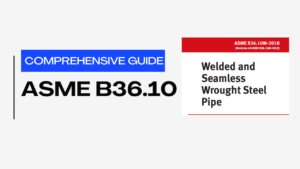1. Standard Swages and Reducers Identification
How should standard swages and reducers be identified and called out?
Explanation: Standard swages and reducers shall be identified and called out, but do not have to be described if adjacent information identifies both end sizes.
2. End Preparation Type of Swages
How should the end preparation type of socket welded swages be called out?
Explanation: Socket welded swages should be called out by preparation type and size.
3. Eccentric Swages and Reducers
How should eccentric swages and reducers be called out?
Explanation: Eccentric swages and reducers shall be called out as FOT (flat on top) or FOB (flat on bottom) and the size shown.
4. Identification of Swage End Preparation
When listed in a Bill of Material, what should be identified for swages?
Explanation: Swages shall have the end preparation type identified when listed in a Bill of Material.
5. Eccentric Reducers Usage
According to Piping Layout Basis, when should eccentric reducers be used?
Explanation: Eccentric reducers shall be used until and unless mentioned in PIDs.
6. End Preparation Type of Threaded Swages
How should the end preparation type of threaded swages be called out?
Explanation: Threaded swages should be called out by preparation type and size.
7. Plain and Threaded Ends
What abbreviations are recommended for plain (both ends) and threaded (both ends) swages?
Explanation: Use PBE for plain (both ends) or TBE for threaded (both ends).
Table of Contents
Don’t miss the Course on Effective Isometrics Management: Check Now
Enrollment Link
Recommended courses (Published on EPCLand)
- Complete Course on Piping Engineering
- Basics of Piping Engineering
- Piping Layout Engineering
- Piping Material Engineering
- Piping Stress Analysis
- Material Requisitions
- Piping Material Specifications
- Valve Material Specifications
- Plant Design & Layouts-OISD 118
- Isometric Management
Library of Technical Articles
Don’t miss out the collection of 15+ articles on following topics:
- Basics of Oil and Gas Industry
- Valves
- Testing
- Tank
- Piping Bulk Items
- Pipe
- Metallurgy
- Piping Materials
- Layout
- Instrumentation
- Heat Exchanger
- Type of Contracts
- Codes and Standards
- ASTM Standards
- Articles on Piping Specialty Items
Video details of Complete Course on Piping Engineering
Why Enroll in the EPCLand
Proven Track Record– PTR
Activities & Achievements before launching EPCLand
- Published more than 50+ short courses
- 3000+ Enrolments
- More than 3,500,00 Minutes of watch hours in the last 2 years
- 4000+ Students in 100+ Countries
- Rating of 4+ out of 5
- 1000+ YouTube Videos
- 8K+ Subscribers
What Students will Learn
- Codes & Standards of the Energy Sector
- Piping Material Engineering
- Piping Layout Engineering
- Stress Analysis
Interesting facts
- All the published courses have been developed by Industry Experts with more than 2 decades of experience
- Content is based on Practical experience and real-time problems.
- Content is designed and organized in such a manner that it can be easily grabbed.
- Complete website, Blogs and Quiz sections are Planned, Designed and published by myself (About me: Atul Singla)
- Complete flexibility of Time & Location, Students can access the content from anywhere & anytime
- Moreover, once enrolled, the content can be access as many times as you want, which helps in understand the fundamentals in a better way.
Conclusion
In conclusion, our courses are meticulously crafted by industry experts with over two decades of hands-on experience. The content is rooted in practical knowledge, addressing real-time problems. The material is thoughtfully designed and organized for easy comprehension. Every aspect, from the website to blogs and quizzes, has been planned, designed, and executed by Atul Singla, ensuring a comprehensive and seamless learning experience. With the flexibility of accessing the content at any time and from any location, students have the freedom to learn on their terms. Furthermore, enrollment grants unlimited access, allowing learners to revisit the material as often as needed, fostering a deep understanding of the fundamentals.



